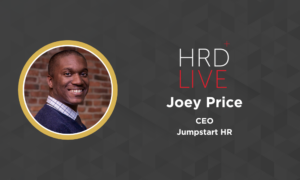A guide to organisational management models and strategies
- 12 Min Read
What is organisational management, exactly? HRD Connect takes a deep dive into OM models and strategies.
- Author: HRD Connect
- Date published: Nov 4, 2019
- Categories

Effective resource management is key to success for any organisation. In a competitive market, organisations need to manage their most important assets in the most effective way possible.
According to a study by Gallup, employees who exercise their strengths on a daily basis are 8% more productive and six times more likely to be engaged.
Organisations need to provide the employees with a sense of security and oneness, for better coordination among various departments, and to empower employees to accomplish tasks within stipulated time frames.
58% of employees say poor management is the biggest factor getting in the way of their productivity, according to a study by the Society for Human Resource Management.
That is where organisational management becomes crucial. In this article, we will explore the most effective organisational management models and strategies.
Organisation management is the technique of uniting people to help them work towards a common, predefined goal. It offers the possibility of using an organisation’s resources to the fullest, and gives a sense of direction to employees.
Effective OM uses planning, organising, staffing, leading and controlling, leading to a peaceful and positive ambience in the workplace.
OM is another way to describe an organizational structure. Structures can be simple or complex, and different companies have different needs. Regardless of the structure chosen, it is imperative that team members understand their duties and who the hierarchy of management. If these elements aren’t clear, chaos ensues and productivity drops.
Importance of OM
- Achieving group goals: OM arranges the factors of production, assembles and organizes resources, and integrates resources in an effective manner to achieve goals. It directs group efforts towards the achievement of pre-determined goals. Defining the objectives of an organization reduces wasted time, money and effort. Management converts disorganized resources into useful enterprise. These resources are coordinated, directed and controlled in such a manner that allows organisations to work towards the attainment of common goals.
- Optimum utilisation of resources: Organisations must use all their physical & human resources productively in order to achieve efficiency. OM provides maximum utilisation of scarce resources by defining their most effective use. It makes use of experts and professional opinions, which leads to the use of their skills and knowledge in the workplace.
- Reduces costs: OM gets maximum results through minimum input by relying on proper planning. Management effectively plans the use of physical, human and financial resources to reduce costs.
- Establishes a sound organisation: To establish a sound organizational structure is one of the primary objects of OM. To accomplish this, OM establishes an effective authority & responsibility relationship, clearly identifying who is accountable to whom, who can give instructions to whom, who are superiors & who are subordinates. OM fills up various positions with the employees best suited to those roles, based on their training and qualifications.
The right OM models and strategy
While considering organisational models and strategies, an organisation needs to consider the industry in which it is operating, the resources at its disposal and the dynamic by which information must flow within the organisation.
OM models and strategy can create organizational charts like clockwork. They define the workflow and how each employee functions in their particular groups within an organisation. Nothing is worse for an organisation than having one major unit do something that blindsides another unit because communication was not clear.
An organisation needs to look carefully at what it does and how it serves its clients. Each segment in the process must have access to information pertinent to achieving the overall goals of the organisation.
OM Models
Consider these models seen in today’s marketplace: Line, Functional, Line and Staff, Project Based, Matrix. Each of these structures, when properly laid out in an organisational chart, show the chain of command in any organisation. It helps define responsibilities and team workflow management.
- Line Organisational Model: Line Organisational Model is a very simple hierarchal structure that could have the CEO over the Operations Director and the Administrative Director. Operations Director and Administrative Director are lateral equivalents, meaning they don’t respond to each other but have the same level of influence in the company’s structure. Under each would be designated area managers, each with their own team. It’s very clear that one person is on top, with a flow of delegation and management going down. This tends to be a more rigid operational model.
- Functional Organisational Model: The Functional Organisational Model is similar to the Line Model, except that subordinates respond to two or more managers. This model is designed to help keep all pertinent parties engaged with the right information by getting all the information from subordinate employees. It also prevents over-specialization of any one job to keep the company nimble in changing times.
- Line and Staff Organisational Model: The Line and Staff Model is a structure that functions the same way that the Line model does except each managerial level has an added dynamic of its own staff. So, directors report to the CEO but may do so via the CEO’s personal staff. Directors may share a staff that are not the subordinate teams in the structure but instead support the administrative needs of the Directors.
- Project-Based Organisational Models: Project-Based Models become much more dynamic compared to the three varieties of line models defined above. When any company is highly project-oriented, it usually designates teams of similar job functions to provide each team with specialty resources. The resources become immediately available rather than accessible outside of the team in a different department. For example, an internet technology company developing several new software packages might have a team for each new package that includes its own set of coders, developers, designers, analysts and testers.
- Matrix Organisational Model: The Matrix Model is the most dynamic operational model and quite effective for companies that are simultaneously running multiple product launches, marketing campaigns and developments. Managers oversee the role of their department leads within a team, while maintaining awareness of the progress made by all teams. This allows for managers to combine resources that individual teams might not see in their own microcosm of the project. For example, a company Matrix structure might have a Marketing, Operations, Finance and HR Manager overseeing multiple projects. Each project has representatives in at least one team. If the marketing manager sees that Team A and Team C have products that can be launched as a package, he can direct resources to leverage budgets and combine graphics and design resources.
OM Strategy
OM strategy is a dynamic long-term plan that maps the route towards the realisation of an organisation’s goals and vision. The goals of the organisation may remain the same, but the OM strategy they adopt can change. OM covers everything from the identity of the organisation to its reason for existing. OM strategy begins with what the organisation wants to achieve and then breaks that down into various sets of activities.
Here are a few noteworthy OM strategies:
- Porter’s Three Generic Strategies: Porter’s three generic strategies receive a lot of attention. Some say that they sum up the basic strategic directions a company can follow very well. Others argue that they are best suited to very large organizations. However, they are worth mentioning here, since they broadly sum up the main strategies available to a business. According to Porter, companies should select one, and only one, of the following strategic directions.
- Cost Leadership: Being able to offer the best prices certainly makes an organisation’s offering attractive to clients. However, the implications of cost leadership need careful consideration. The organisation’s product or service must still be profitable. At the same time, quality must still be good enough to encourage consumers to purchase what you have to offer.
- Differentiation: For this OM strategy, the organisation isn’t necessarily looking to be the cheapest. Instead, they are aiming to be the best. In most instances, this would preclude cost leadership. There are many ways to achieve differentiation. It could be through innovation, quality, service levels, features, benefits – the list could go on.
- Focus: Focus strategies identify and target niche markets. Niche markets are, by definition, smaller, but they can be enormously profitable for those who choose to serve them. They also allow you to target your marketing to very specific market segments.
- Growth OM strategies: Growth OM strategies are invariably costly. Organisations can look at options like increasing sales of existing products and the size of the geographical area you serve or/and buying out a competitor.
- Rationalization: Rationalization OM strategy is not necessarily the opposite of the growth strategy, at least, in terms of the results it produces. Sometimes, organisations that have been following a growth strategy find that they have become overly complex. It’s even sometimes possible to decrease turnover and yet make more profit – both in absolute and percentage ROI terms. In this OM strategy, organisations can think about discontinuing products, laying off staff, reducing their number of outlets, and generally streamlining to make the business more profitable and more focused on what it does best. Ironically, this can mean financial growth as the business becomes more efficient.
- OM strategies by business function: All the functions of the organisation must contribute to the organisation’s goals. The organisation can have several functional strategies that all contribute to a defined result. There could be be sub-categories for each of the functional strategies under this OM strategy.
Making changes to fit OM models and strategy
Once the organisation has determined its OM model and strategy, operationally it must decide what must be done to make your goals a reality. Each task must synch with the plan – and if it can’t, the OM models and strategy may require changes in the organisation.
Organisation must take the existing OM model and strategy using the feedback and analysis from its leadership and determine where the gaps are. If all information is gathered at the top to be redistributed to those who “need to know,” the organisation might find persistent problems. Data might be delayed, impacting performance. An oversight might prevent someone from getting much needed information or updates. An adjustment from a Line Model to a Functional Model, for example, might be all that needs to happen with everyone getting the information as it gets passed on from one department to the next.
Any OM model or strategy that the organisation implements must be fluid. By being fluid, the organisation is always in motion, while the marketplace is always changing, and it is able to adapt to remain effective and profitable.
To make changes acceptable, the organisation can implement major changes in phases to prevent overwhelming and confusing the employees. Employees get used to one method of doing things and find it easier to make smaller changes than entire overhauls. Phase implementation might help in reducing integration resistance.
Trends in OM models and strategy
In the last few years, new OM models and strategy have emerged, with online ventures and open and collaborative organisations. Here are a few new OM models and strategy:
- User orientation and autonomous work groups: Big organisations have moved away from hierarchical structure to OM models and strategy where there are relatively autonomous groups of front-line staff, supported by the technical staff and management. Control is exercised by the users/consumers and their requirements, translated through information and operational systems that highlight the degree to which consumer demand is being successfully met. The demands of a ‘Just in Time’ system of production, for example, provide the structure and discipline to front line staff formerly supplied by hierarchical managers. The manager’s task in this case is to assess variances in performance and ensure the system is integrated effectively. This thinning of hierarchies and distributing of responsibility to front line teams has been termed heterarchical where there are many nodes of power and responsibility. An example of this is the Chaordic Organization described by Dee Hock and others while forming the VISA organization. The term ‘chaord’ is formed by ‘chaos’ and ‘order’. In the formation of the VISA organization, a means was designed to allow for the simultaneous cooperation and competition of the member banks of the VISA issuing network. This was necessary for the scale and universality needed to make credit cards usable in any geography and to provide low costs of processing each transaction. Dee Hock’s vision of this type of organization was largely, but not fully, achieved by the VISA organization at the time it was first formed.
- Distributed organisations: By adopting distributed strategy, organisation can remain small and sub-divided (like cells). This is the basis for the expansion of Riverford organics, which franchises distributors of its organic produce, while involving twelve sister farms in a co-operative of regional producers. This structure was intentionally adopted by the founder of Riverford, Guy Watson, to keep his venture small, and production local. The resulting network now delivers 47,000 organic food boxes a week.
- Dimensions of management: Different organisations are at different development stages of the innovation and require different forms and styles of leadership and management. In the initial stages, leadership takes on the role of a pioneer. As the organisation develops, leadership needs to take on the skills of adapting, listening and learning. Management is not only about the giving of orders, but it is about seeding multiple centres of activity and initiative and building forums to allow this mosaic of energy to interact, channelling debate and tension into further innovation.
- Managing systems and structures to maintain innovation: There is commonly a tension between the demands of continuing operations and the organisation’s ability to maintain innovation. The financial and managerial demands of innovation may put pressure on existing business. There are different management styles that may be appropriate for innovation and operations. Spin-offs are one way of managing this tension. Careful succession planning is another, permitting the initial innovators to move on to new tasks.









